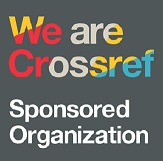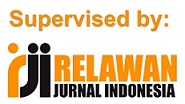THE EFFECTIVENESS OF EDMODO TOWARDS INDONESIAN EFL LEARNERS’ ENGLISH PROFICIENCY
Abstract
Full Text:
PDFReferences
Al-Kathiri, F. (2015). Beyond the classroom walls: Edmodo in Saudi secondary school EFL instruction, attitudes and challenges. English Language Teaching, 8(1), 189–204. doi:10.5539/elt.v8n1p189
Al-Naibi, I. H., Al-Jabri, M., & Al-Kalbani, I. (2018). Promoting students’ paragraph writing using EDMODO: An action research. Turkish Online Journal of Educational Technology-TOJET, 17(1), 130–143.
Balasubramanian, K., Jaykumar, V., & Fukey, L. N. (2014). A study on student preference towards the use of Edmodo as a learning platform to create responsible learning environment. Procedia - Social and Behavioral Sciences, 144, 416–422. doi:10.1016/j. sbspro.2014.07.311
Bicen, H. (2015). The role of social learning networks in mobile assisted language learning: Edmodo as a case study. Journal of Universal Computer Science, 21(10), 1297–1306
Botero, G., Questier, F., & Zhu, C. (2019). Self-directed language learning in a mobile-assisted, out-of-class context: Do students walk the talk? Computer Assisted Language Learning, 32(1–2), 71–97. doi:10.1080/09588221.2018.1485707
Canapero, M. (2004). Connecting, motivating and raising awareness via WELL: Developing e-learning environments for science students. ReCALL, 16(2), 330–344. doi:10.1017/S095834400400062X
Chang, C., Chang, C. K., & Shih, J. L. (2016). Motivational strategies in a mobile inquiry-based language learning setting. System, 59, 100–115. doi:10.1016/j.system. 2016.04.013
Charoenwet, S., & Christensen, A. (2016). The effect of edmodo learning network on students’ perception, self-regulated learning behaviors and learning performance. Proceedings of The 10th International Multi-Conference on Society, Cybernetics and Informatics (IMSCI 2016) (pp. 297–300)
Chen, B., & Bryer, T. (2012). Investigating instructional strategies for using social media in formal and informal learning. The International Review of Research in Open and Distributed Learning, 13(1), 87. Retrieved November 8, 2019, from http://www.irrodl. org/index.php/irrodl/article/view/1027/2073. doi:10.19173/irrodl.v13i1.1027
Croitoru, M., & Dinu, C. N. (2016). A critical analysis of learning management systems in higher education: Academy of economic studies. Economy Informatics, 16(1), 5–18.
Crotty, M. (1998). The Foundations of Social Research: Meaning and Perspective in The Research Process. London: Sage
Ekmekc¸i, E. (2016). Integrating Edmodo into foreign language classes as an assessment tool. Participatory Educational Research, 3(4), 1–11. doi:10.17275/per.16.spi.1.1
Enriquez, M. A. S. (2014). Students’ perceptions on the effectiveness of the use of Edmodo as a supplementary tool for learning. DLSU Research Congress, 6–11. https://doi.org/10.1017/CBO9781107415324.004.
Ferguson, G. (2007). The global spread of English, scientific communication and ESP: Questions of equity, access and domain loss. IBERICA, 13, 7–38.
Fithriani, R. (2021). The utilization of mobile-assisted gamification for vocabulary learning: Its efficacy and perceived benefits. Computer Assisted Language Learning Electronic Journal (CALL-EJ), 22(3), 146-163. http://callej.org/journal/22-3/Fithriani2021.pdf
Fithriani, R., & Alharbi, M. A. (2021). The adoption of Edmodo in a hybrid EFL writing class: What do Indonesian students and lecturers say? Asian EFL Journal, 28(2.3), 38-60.
Fraenkel, J., Wallen, N. (2012). How to design and evaluate research in education. New York: McGraw-Hill Higher Education
Gay, E., & Sofyan, N. (2017). The effectiveness of using Edmodo in enhancing students’ outcomes in advance writing course of the fifth semester at FIP-UMMU. Journal of English Education, 2(1), 1–11. http://usnsj.com/index.php/JEE/article/view/2.1.1-11.
Graham, K. (2016). Extending the language classroom with Edmodo. Modern English Teacher, 25(2), 41–43.
Hinton, P. R., McMurray, I., & Brownlow, C. (2014). SPSS explained. New York, NY: Routledge.
Hutchinson, T., & Waters, A. (1987). English for specific purposes: A learner-centered approach. Cambridge: Cambridge University Press.
Ito, M., Gutierrez, K., Livingstone, S., Penuel, B., Rhodes, J., & Salen, K. (2013). Connected learning: An agenda for research and design. Irvine: The Digital Media and Learning Research Hub.
Johnson, R.B., Onwuegbuzie A. J., & Turner, L. A. (2007). Toward a definition of mixed methods research. Journal of Mixed Methods Research, 1(2), 112. http://mmr.sagepub.com/cgi/content/abstract/1/2/112
Kayaizmir, H. (2012). Blending technology with constructivism: Implications for an ELT classroom. Teaching English with Technology, 15(1), 3-13
Klimova, B., & Poulova, P. (2015). A social networks in education. Eric, 240–246. https://eric.ed.gov/?id=ED562164
Shams-Abadi B., Bahrami, B., Ahmadi, S. D., & Mehrdad, A. G. (2015). The effect of Edmodo on EFL learners’ writing performance. International Journal of Educational Investigations, 2(2), 88–97.
Vijayakumar, S., & Viswanathan, R. (2018). Performance analysis in blended and online classrooms: An experimental study. CALL EJ, 19(2), 100-124. http://callej.org/journal/19-2/Kumar-Viswanathan2018.pdf.
Wichadee, S. (2017). A development of the blended learning model using Edmodo for maximizing students’ oral proficiency and motivation. iJET, 12(2), 137-154. https://doi.org/10.3991/ijet.v12i02.6324
DOI: https://doi.org/10.30743/ll.v6i2.5677
Refbacks
- There are currently no refbacks.
Fakultas Sastra
Universitas Islam Sumatera Utara (UISU), Medan
Jl. Sisingamangaraja Teladan Medan 20217
Telp. (061) 7869911, e-mail: language_literacy@sastra.uisu.ac.id









